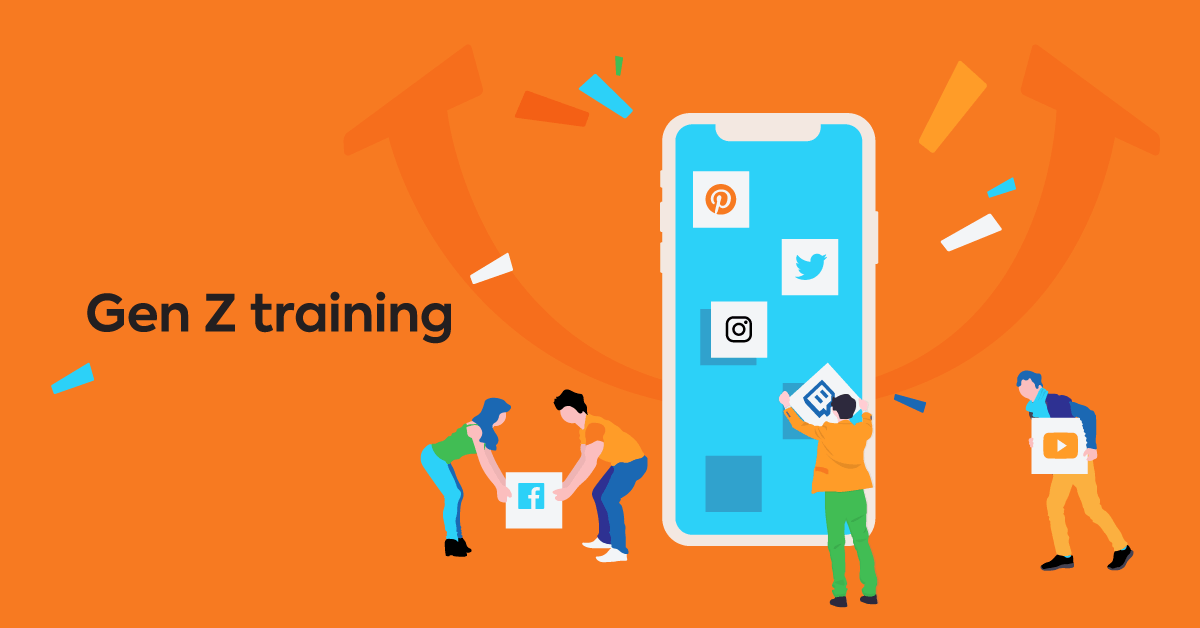If we’re being honest, user enjoyment is not the first thing you address when planning and building a new training course.
Of course, you want people to engage with the training. But your first thoughts are likely around the content and your objectives. You build training based on what you need to include to get people to the expected learning outcomes.
If you want to build training that sticks, though, consider taking a learner-centered approach.
There are plenty of reasons to make the learner experience a priority and not an afterthought in your training strategy. In this article, we’ll share what a learner-centered approach is, why you want to use it, and tips for how to apply it in your training program design.
What is a learner-centered approach?
A learner-centered approach is just what it sounds like: A method of building training that takes into account the user experience first. It shifts the traditional focus from what the instructor should be teaching to what the employee should be learning.
The distinction may sound subtle, but it can actually make a big difference in how you present your content. And, more importantly, in how much information your employees retain.
Here’s a look at some of the key differences between the two approaches:
Why you should consider a learner-centered approach
No matter your approach, the ultimate goal is retention and application of the content. You want people to learn, you want them to remember what they learn, and you want them to apply what they learn back on the job.
When you acknowledge learner needs and preferences, you design a course that appeals to them and that they find accessible. You’ll add interactive elements, make use of technology for convenience and engagement, and build in activities that support learning.
Simply put, when you design for people, they’ll be more engaged with the training. And when they’re more engaged, they’re more likely to absorb and remember the content. And their improved performance will boost productivity and help you reach your company goals.
So how exactly do you take a learner-centered approach to training design?
6 tips for learner-centered training design
Putting the learner first means seeing the training through their eyes. When and how do they want to learn? How can you get them to actively take charge of their own learning? Here are six ways you can make your training more learner-focused from the beginning.
1. Start with learner-centered objectives
Set targets for your course that take learner benefits into account. Analyze company data and poll employees to find out what they need and want to learn.
Then, based on the data, set your goals around what learners should take away from the training.
Focus on what the learner should be able to do following the course rather than just what information they’ll be able to repeat once they’ve finished it.
2. Offer flexible delivery
Focusing on learners means offering the content in a way that’s easy to access at a convenient time. For many learners, that means online or mobile delivery and self-paced learning.
Most employees are used to researching and learning via their smart devices. Consider using an LMS that’s mobile friendly. Giving them content they can access from their smartphones makes it easy and familiar to get into.
Looking for an eLearning platform that’s easy to access?
Create online courses with flexible delivery with TalentLMS.
The training platform that users consistently rank #1.
Self-paced learning also means they can log on between busy times at work or on the go when they have the time to really engage. Make it even easier to engage and stay focused by breaking content into small, digestible chunks. Microlearning and mobile go hand in hand and will ensure your employees have easy, appealing access to training when and where they need it.
3. Create custom learning paths
Use your LMS to set up tailored learning paths. The right platform will let you personalize the home page based on the user’s role in the company and training history. They’ll see only what’s relevant to them.
Employees will be more motivated to learn when they can see the connection between the content and their career needs and goals.
4. Include engagement activities
Give learners an active role in their own education by including experiences that get them using the skills and teaching one another. Make full use of your LMS features for increasing learner engagement with interactive and hands-on practices.
Here are a few learner-centered activities examples to get you started:
- Role-playing: Let employees practice the skills in a real-life scenario
- Debates: Have them discuss the pros and cons of different skills, or how best to use them at work.
- Group projects: Ask learners to work together to create a presentation or solve a problem using the skills.
- Assessments: Use your LMS functionality to include tests and quizzes throughout the learning. This will test your employees’ understanding, but will also help them retain what they learn by offering frequent chances to recall the content.
Engagement activities give learners hands-on experience with the content which makes it more “sticky.” The more they drive the learning, the more likely they are to remember it and take it back to work with them.

5. Make learning social
Content is more memorable when students teach it to others. Take advantage of this option by building social functionality.
Set up discussion groups and forums in messaging apps or on social media. Give employees a place to ask and answer questions or share how they apply the learning at work.
Hearing what others have to say and learning from their experiences helps employees see how the content applies to them. Which in turn means they’re more likely to remember and use their new skills.
6. Ask for feedback
Keep your training focused on the learner experience by getting feedback from employees who go through it.
Survey them after the course to see what’s working and what may need improvement. Ask specifically about what types of experiences they find engaging, whether or not they understand the content as presented, and whether media and graphics are helpful and compelling.
Getting input from learners will help you refine your course content and delivery. It will also let you see whether you’re reaching your training objectives.
Set the stage for a successful learner-centered approach
A learner-centered approach is more effective when you prepare employees to show up ready to learn. Set your learners up for success by priming them on how the course will benefit them. Explain up front what they’ll be learning and how it applies to their career success.
When you get learners geared up to be active participants in their own learning, they’ll take ownership. They’ll feel a sense of responsibility and pride in the process.
Being learner-centered doesn’t just mean making engaging content and rolling it out, hoping for the best. It means truly investing in your employees’ experience. And when they see that you’re investing in them, they’ll be more engaged and productive in the course and at work.
| Tags: eLearning Design,Employee Training,Engaging learners,Learner Engagement



